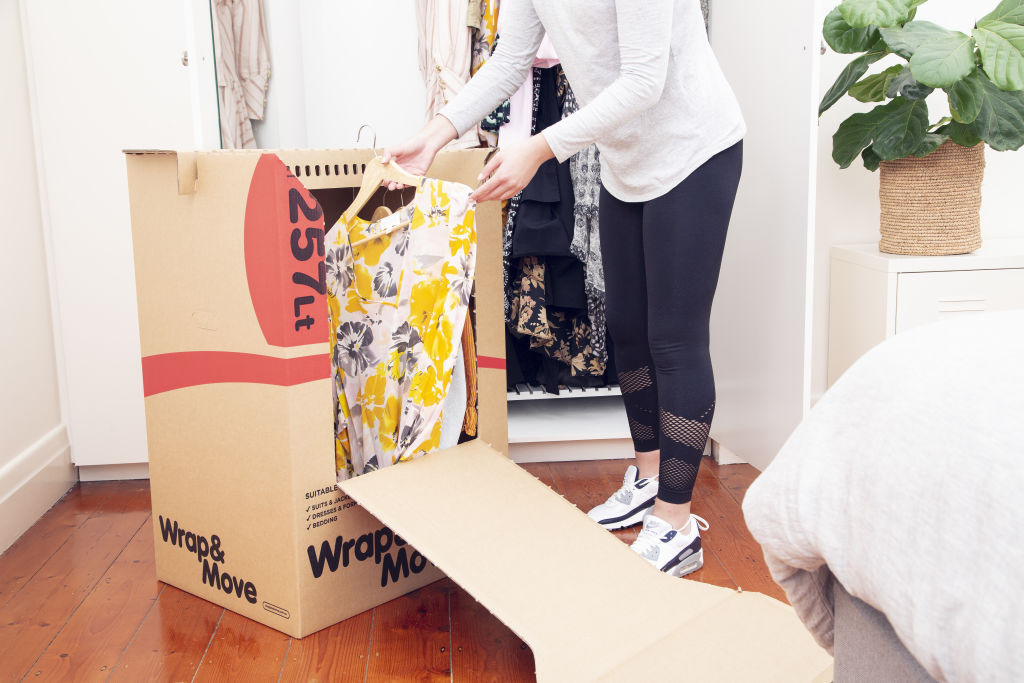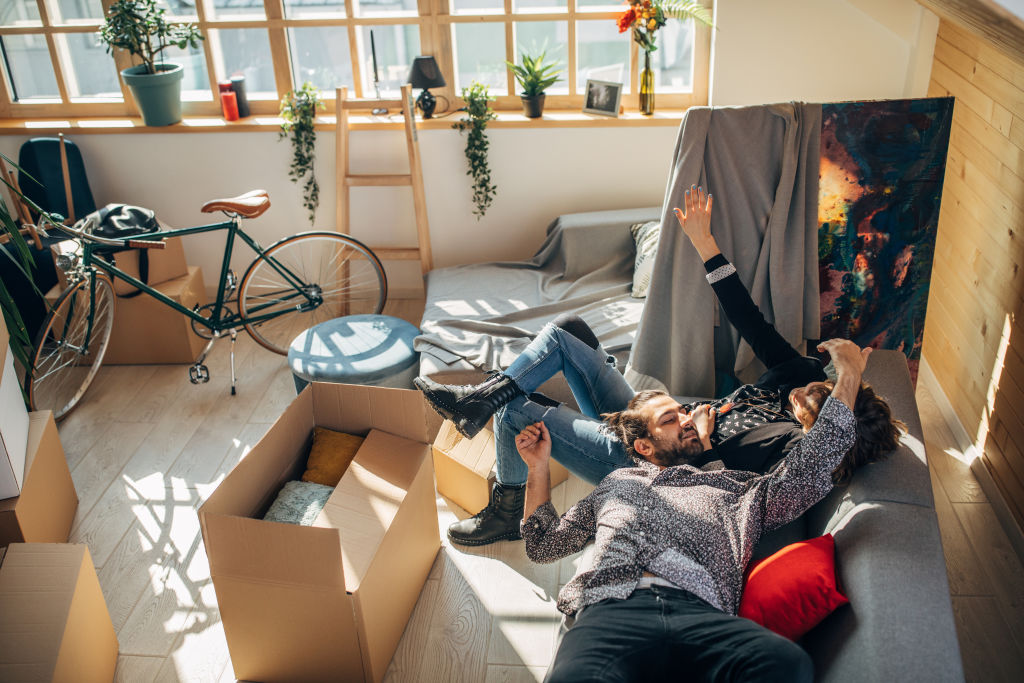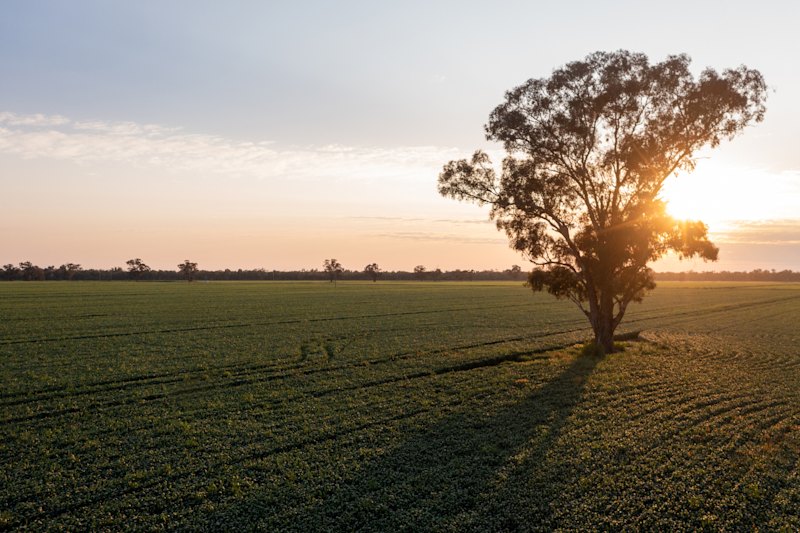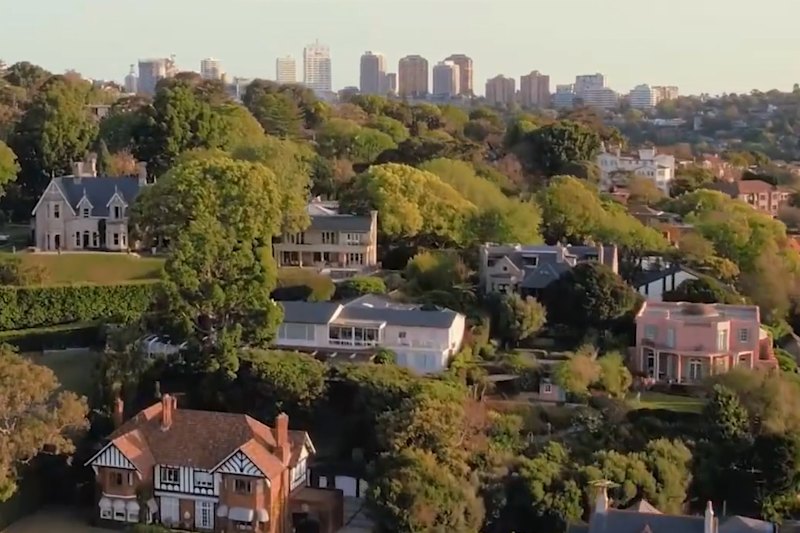5 tips to make your next move easier

Without adequate preparation, moving house can be arduous, stressful and expensive.
Save yourself the hassle with the following expert advice on how to pack, declutter, and box up everything before the big day.
Prepare four to six weeks in advance
Start preparing at least four weeks before moving day with admin and cleaning tasks, such as reserving a Budget Australia moving truck, organising a pet or babysitter, and booking a hard waste collection.
You’ll also need to purchase or hire your moving equipment and accessories, including good-quality tape, a box cutter, a trolley, and a variety of box sizes.
Boxes can often be sourced second-hand to save money, but aim for a single brand if possible.
“I’m a huge fan of sticking with one brand, so they are uniform in size and therefore easy to stack as you pack and fit into the moving truck,” says Amy Revell, owner of The Art of Decluttering.
A messy house can feel overwhelming, so do a big tidy-up before decluttering and packing.

Invest time in decluttering
A huge part of the preparation process is decluttering, which Revell advises starting two to three weeks before moving day.
“When you pack to move house, you touch every single item in your home – don’t waste this opportunity to declutter,” she says.
“By decluttering before you move, you’ll save on moving costs, the packing and unpacking will be quicker, and you won’t be stuck trying to find places to store items that you just don’t need anymore.”
Founder of The Tidy Effect, Michelle Anderson, recommends the KonMari method created by Marie Kondo, which declutters clothes, books, papers, and miscellaneous and sentimental items in order.
Decluttering by category also allows you to take stock of your home’s inventory.
“Some people have no idea just how many batteries they’ve bought until they sort by category!” Anderson says.
Pack by category, not room
Like the decluttering process, pack items in categories rather than going room by room, except for an initial area you’ll use to store packed boxes.
“If possible, create a space in your home that becomes where you put things that are packed. This is easier for moving day but also helps you visually see what still needs to be packed up as you go,” Revell explains.
Pack your least used categories first, with the aim of having most items boxed away with one week to go.
“I liken the week before a move to being on holiday – you only need a few changes of clothes and minimal household items.”
Keep a separate box of items you’ll need to access on moving day, such as phone chargers, sheets, towels, changes of clothes, and toiletries.

Create a labelling system
Using an organised labelling system will save time and stress when it comes to unpacking.
Anderson’s tried and true method is to give each item category a number (i.e. kitchen appliances are category one, bed linen is category two, etc), with a more detailed breakdown of each box’s contents saved in her phone.
Mark categories on all sides of your boxes, so they’re easily visible when stacked.
“I also recommend writing which room you’d like the box to be put in when you’re unloading at the new house,” Anderson says.
Hire your own moving truck
Save money and move at your own pace by hiring your own moving ute, van or truck. Budget Australia offers almost 40 vehicle types available in over 180 locations across Australia.
“By DIYing your move with a Budget vehicle, you can save money, gain more control and avoid the time constraints associated with removalists. You can rent the vehicle over a few days and move at your own pace, so you really are the one in the driving seat,” says Tom Mooney, managing director at Avis Budget Group.
“Hiring your own vehicle and moving yourself also gives you peace of mind and control over your items being handled correctly and safely whilst being packed, loaded, and unloaded.”
Budget’s free Fastbreak membership allows customers to avoid the paperwork and skip the line at pick up and drop off. Members can also add additional drivers to their rental agreement for free to share the load on moving day.
We recommend
We thought you might like
States
Capital Cities
Capital Cities - Rentals
Popular Areas
Allhomes
More
- © 2025, CoStar Group Inc.








